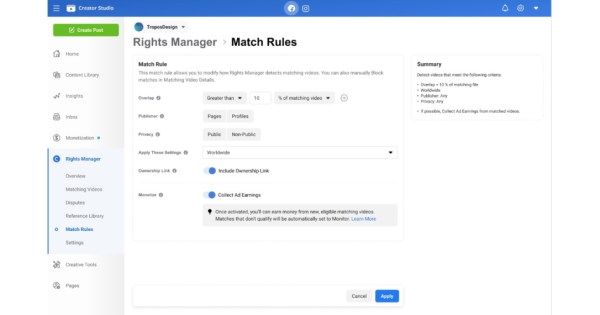Investors need to assess a project’s coin supply because their production is usually based on users like miners and validators. Since crypto is different from fiat currencies, whose circulation is ensured by the government, an economic solution is to limit their supply to produce a relationship between it and demand.
However, not all cryptocurrencies have a limited supply. Crypto projects have evolved considerably in recent years, with developers exploring vast options for making cryptocurrency more flexible and approachable. Making crypto easy to understand and acquire is necessary for future adoption. This is why start-ups and small blockchain businesses spread awareness and advocate for education on the matter, especially on Bitcoin, the most trusted coin on the market. That’s why learning how to buy Bitcoin is pretty straightforward.
Bitcoin has a limited coin supply, but Ethereum doesn’t. How much does this aspect affect their prices?
On cryptocurrency coin supply
The coin supply of a cryptocurrency matters in terms of distribution, demand, and market capitalization. These metrics allow investors to make predictions about the price of an asset and evaluate the value of a coin before adding it to their portfolio.
Supply can be considered as:
Circulating, representing the number of coins on the market;
Maximum, which is the total number of coins that will be created;
Total, that involves both the circulating and existent coins;
Bitcoin has a maximum coin supply of 21 million, so no more coins will be generated when it reaches this state. At the moment, approximately 95% of Bitcoins are issued on the market, so it seems like we’re close to its end. However, this is far from true because its mechanism employs halving. This event occurs every four years to reduce the block reward for miners, increasing difficulty and demand.
What’s the difference between supply terms?
Every type of supply has several different aspects. For example, when we refer to changes, the maximum supply is more complex to change over time, but the circulating one is more flexible. Of course, this also depends on cryptocurrency and white paper technology.
Ethereum, for example, suffered several changes after it switched from proof of work to proof of stake, even in terms of supply. While it has an unlimited supply, its issuing rate is supposed to change as well since the method of issuing is staking, not mining.
Supply is also distinct on certain types of tokens. Stablecoins, for example, are backed by fiat money and financial institutions, so their maximum supply tends to be constant due to preventing massive price fluctuations. There are also algorithmically-backed coins that are prone to fluctuations risks since they’re based on current market values, so their supply can increase or decrease.
What are the ways of adding coins to the circulation?
Since cryptocurrencies are decentralized, adding more coins to the market relies solely on users. In the case of Bitcoin, whose consensus mechanism is proof of work, users mine through complex hardware, solving mathematical problems and adding blocks to the chain. The mining process also ensures the network is safe, but the mining rate and difficulty can fluctuate. Usually, it takes about ten minutes to mine one Bitcoin.
On the other hand, Ethereum switched from this method since it became inefficient for the rapidly growing network. The staking system implies that users use their Ether as collateral to validate transactions, so they don’t need any computational power. However, validators must own 32 ETH to be capable of adding new blocks to the chain.
There are plenty of other cryptocurrencies that use the proof of work mechanism, such as Litecoin or Dogecoin. But since they’re not as popular, mining isn’t that difficult or energy-intensive compared to Bitcoins’. At the same time, other consensus mechanisms, like proof of history or the Byzantine fault tolerance proof of stake, offer alternatives to crypto projects that want to handle supply differently.
What happens when a cryptocurrency reaches its limit?
Since Bitcoin will mine its last coin at some point ―which is forecasted to happen in 2140, we’re wondering how that will affect the market and its existence. After the event, miners will receive incentives from transaction fees following securing the blockchain, so there won’t be any block rewards.
Therefore, miners can continue their activity, but for different reasons, such as:
Contributing to solidifying Bitcoin as a store of value;
Supporting the high number of transactions that generate fees;
Harnessing unique energy from mining operations to other sectors;
Changing the total supply might not be a viable option, but we don’t know what technological advancements the future holds. Any modification would need the approval of all participants, from developers to stakeholders and the community.
Are coins better with limited or unlimited supply?
Supply is very important, but when it comes to its limitations, investors can be confused as to which option is best. Bitcoin is the most popular cryptocurrency with a limited supply, whereas Ethereum is second, presenting an unlimited coin supply.
Both are successful cryptocurrency projects, with Bitcoin being a reliable store of value and Ethereum supporting developers through smart contracts and decentralized applications. That’s why Ethereum seems better; its lack of limitations provides more opportunities, and developers are not afraid of the future of the coin’s end. Moreover, coins with no supply limits tend to be more stable due to their inflationary features.
However, creating new coins forever will eventually lead to inflation, which is possible even in the world of cryptocurrencies. At the same time, since there’s no scarcity, investors might find less potential in their value compared to coins with limited supply.
Cryptocurrency coin supply is vital for the market
Developers have created cryptocurrencies over time to ensure people can use decentralized digital assets for investments and exchanges. However, since the circulation mechanism is more complex, most developers decided to limit the supply to create demand and handle scarcity. Still, there are cryptocurrencies with unlimited coin supply, especially in projects that focus more on blockchains and applications rather than peer-to-peer exchanges.












